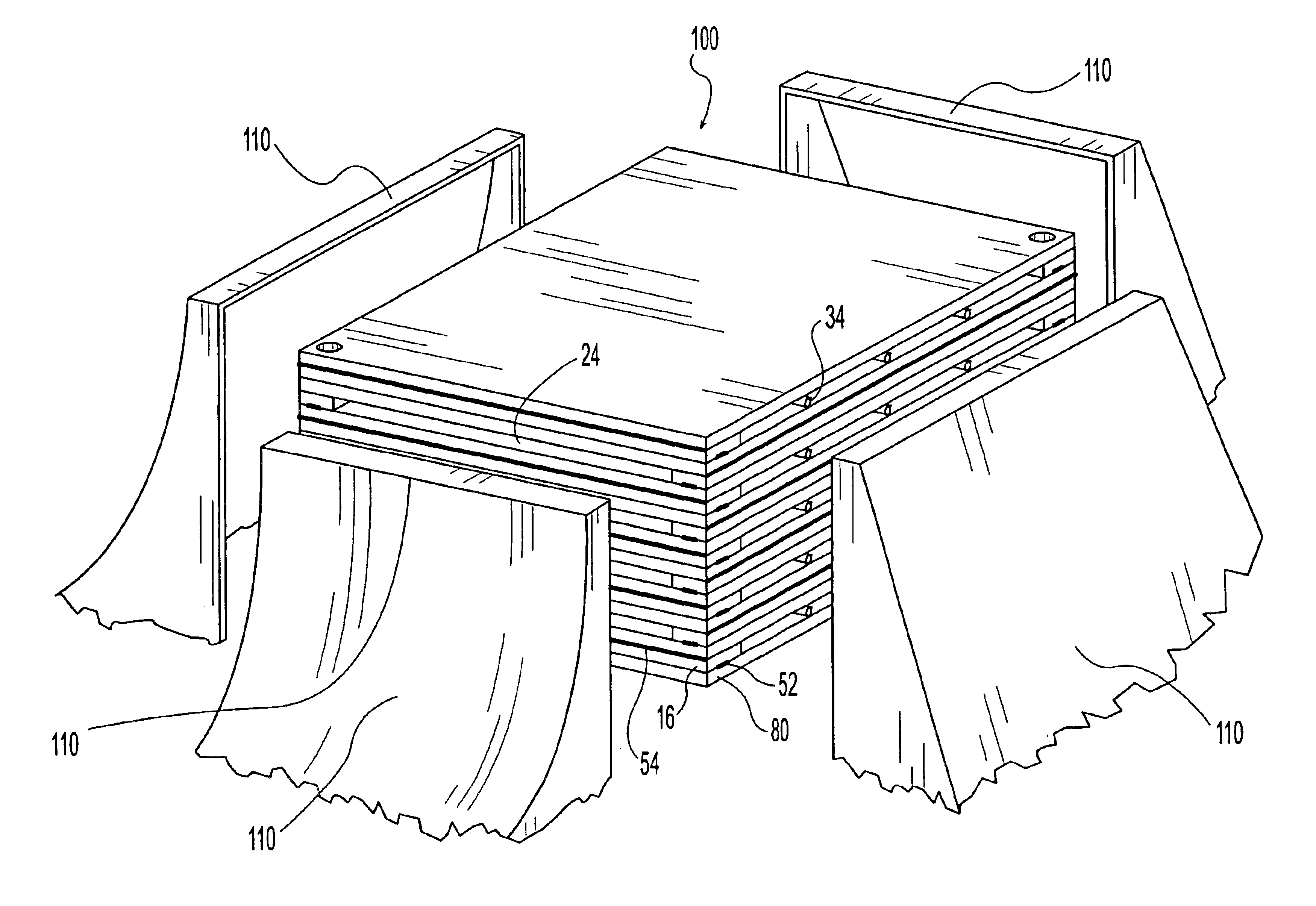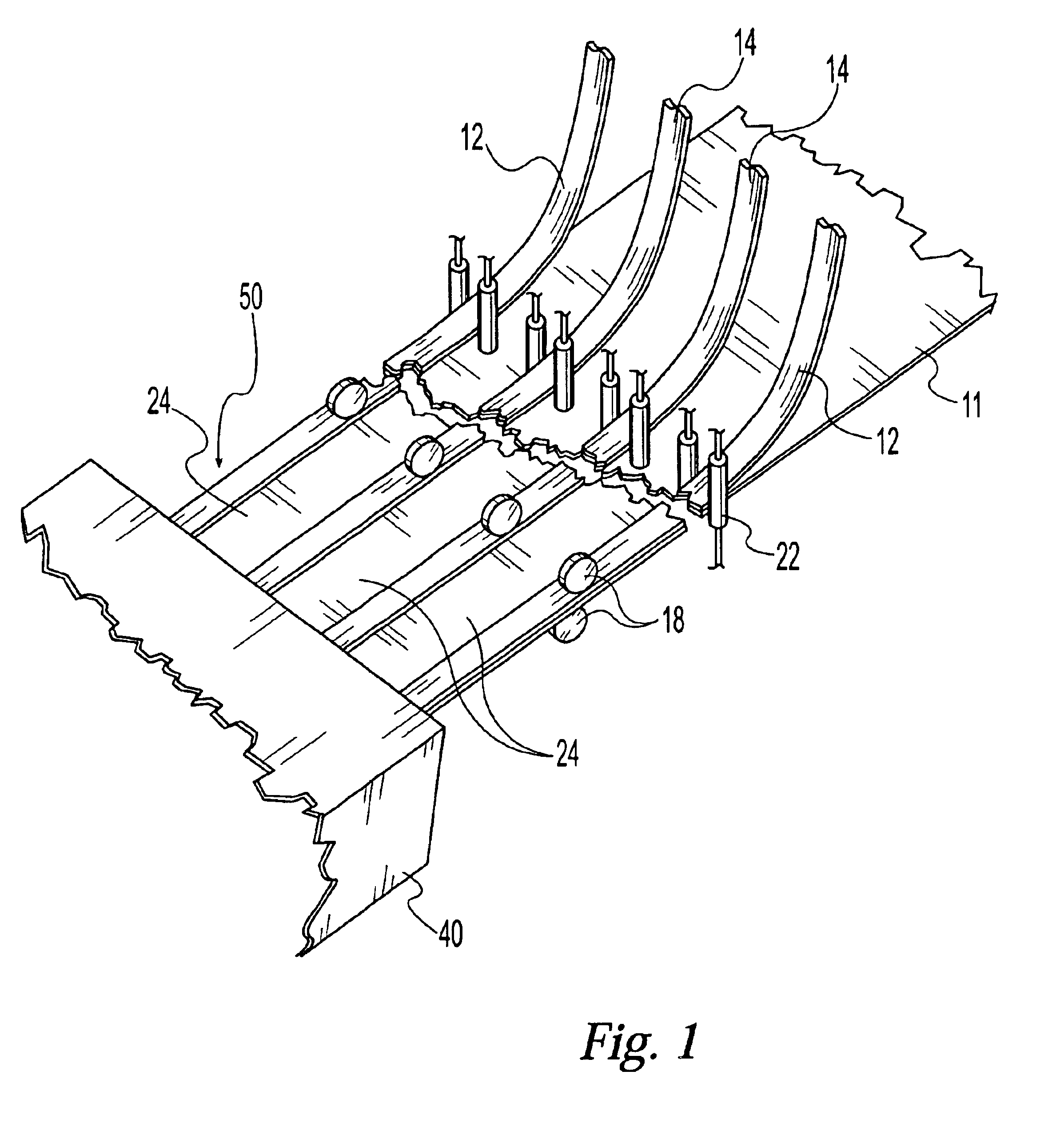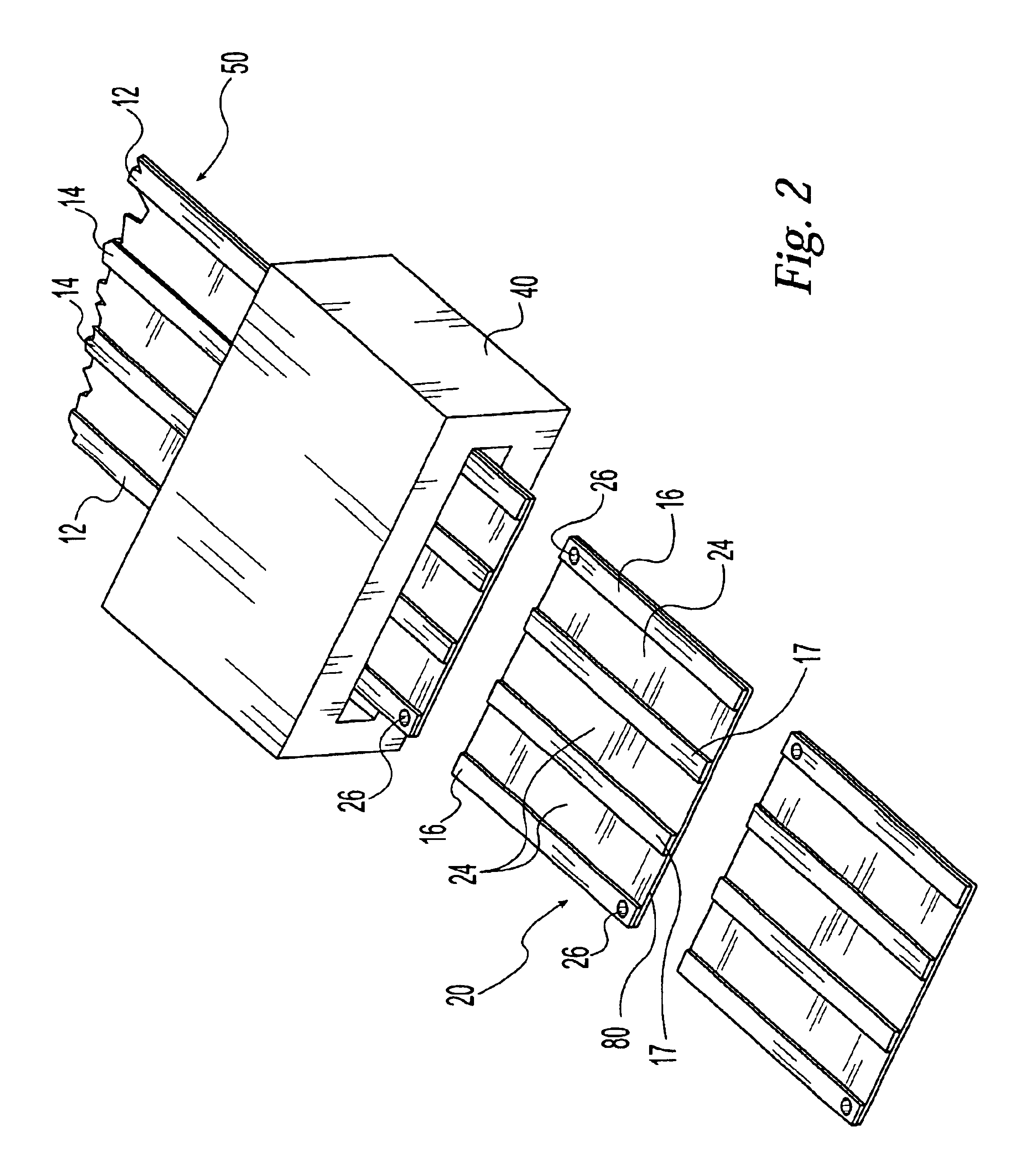Method of fabricating multi-channel devices and multi-channel devices therefrom
a multi-channel device and fabrication method technology, applied in the direction of manufacturing tools, laminated elements, light and heating equipment, etc., can solve the problems of difficult fabrication of smaller and more compact multi-channel devices to meet economic constraints, significant increase in the cost of wire edm, compared to other techniques, and long fabrication time, etc., to achieve improved fabrication methods, lower pressure, and lower equipment cost
- Summary
- Abstract
- Description
- Claims
- Application Information
AI Technical Summary
Benefits of technology
Problems solved by technology
Method used
Image
Examples
Embodiment Construction
FIG. 1 shows a first step in fabricating the typical subassembly 10, 20, 60 (FIGS. 3, 4, and 5, respectively) for eventual inclusion in a completed stack 100 (FIG. 8). Beginning with a feed of the desired metals, plastics, ceramics, or other suitable materials of construction, the main components of the typical subassembly 10 (FIG. 3), the base web 11 and at least two edge webs 12, are fed together while being guided and aligned. As it is desirable to adapt the present invention to a continuous high-speed process, coil-fed operations, well-known to those of ordinary skill in the art, may be employed with certain materials such as metals and plastics. Alternatively, any desired length of metal or other material may be fed by other well-known methods. While a standard alignment method using alignment rollers 22 is shown, it will be appreciated by one skilled in the art, that other alignment methods could be utilized with equal success. Alignment plates, for example, could be employed ...
PUM
| Property | Measurement | Unit |
|---|---|---|
| Time | aaaaa | aaaaa |
| Adhesivity | aaaaa | aaaaa |
Abstract
Description
Claims
Application Information
 Login to View More
Login to View More - R&D
- Intellectual Property
- Life Sciences
- Materials
- Tech Scout
- Unparalleled Data Quality
- Higher Quality Content
- 60% Fewer Hallucinations
Browse by: Latest US Patents, China's latest patents, Technical Efficacy Thesaurus, Application Domain, Technology Topic, Popular Technical Reports.
© 2025 PatSnap. All rights reserved.Legal|Privacy policy|Modern Slavery Act Transparency Statement|Sitemap|About US| Contact US: help@patsnap.com



